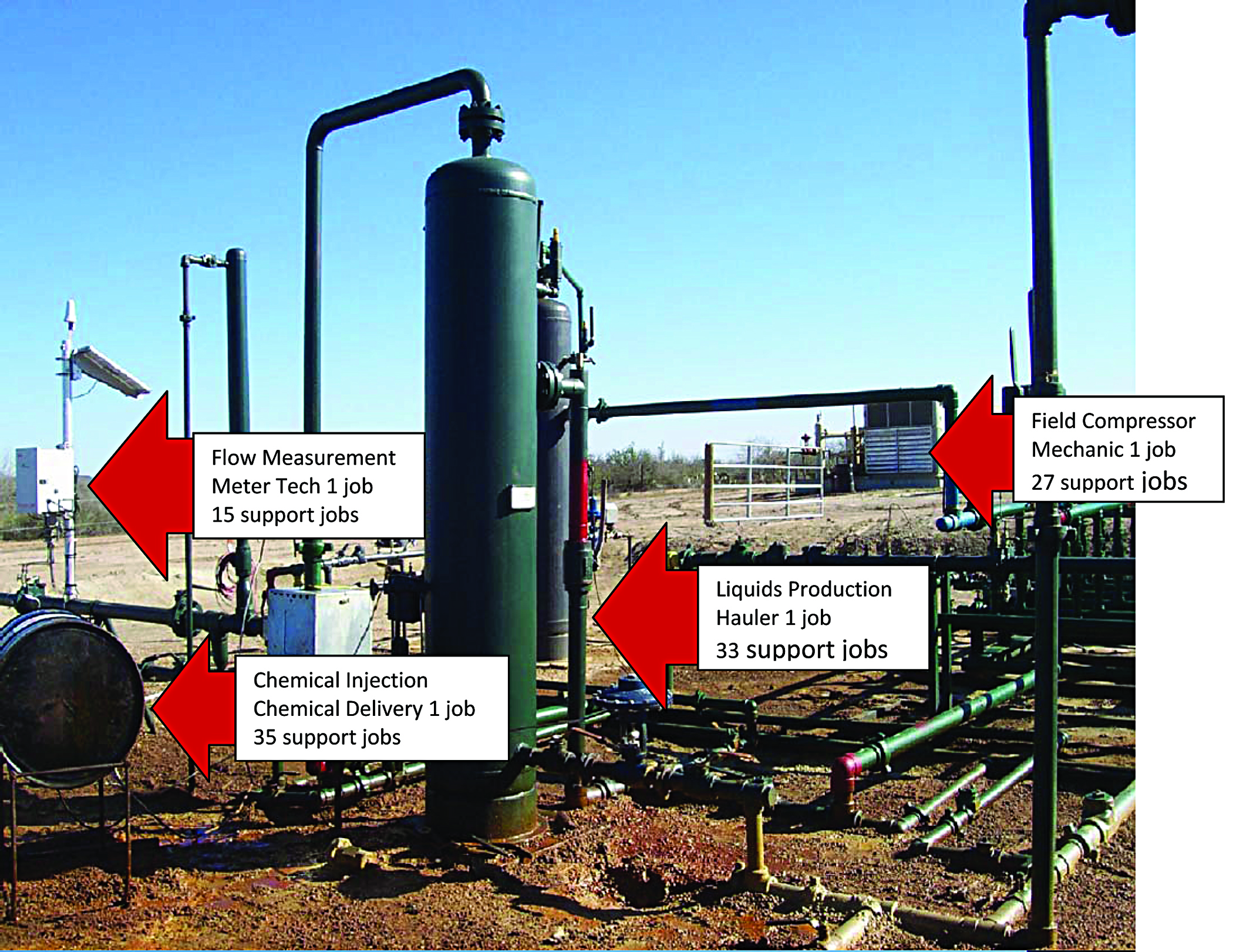June 2012 Vol. 239 No. 6
Features
The Oil And Gas Job Multiplier

No economic development plan is ever complete without its economic impact study. This is then a statistical presentation outlining the benefits of a stadium or an event to the local economy. No group has been more aggressive or effective in generating these models than the public stadium and arena development industry.
There hasn’t been a bond election or a plan submitted that did not have hundreds if not thousands of jobs that would be generated if approved by the voters. What if we apply this same economic modeling to a typical gas well? This article demonstrates the economic vitality created by one well that may have steady active job production for up to 20 years.
First step is to define our subject, a typical gas well. As such, a typical gas well will produce both gas and a certain amount of oil or condensate. Most wells require a chemical treatment program. The chemicals used address problems from scaling and paraffin build up to H2S treatments. It is quite normal to have some type of field compression for enhanced or better rates of recovery from the reservoir. Naturally everyone is interested in measuring the amount of gas and associated oil or condensate produced as to calculate the revenue from the well’s production.
From these various functions and components it is contended here that a typical well contributes to the livelihoods of 115 people. To substantiate this finding, let’s focus on just the chemical injection function and the claim that it supports 35 ancillary jobs. Of course there is the actual deliveryman; dispatched to deliver the chemical to the well for hook up and application. Behind him is the salesman calling on the producer to ascertain the producer’s requirements. Behind him is a chemist who receives the sample from the well’s production or a scenario of a problem occurring at the well requiring chemical treatment.
The chemist then turns to the actual production of the chemicals. This takes an assorted group of laborers, chemists and quality control inspectors of five to ten jobs. Within that batch process are feedstocks and raw materials necessary to formulate the chemical to be delivered. This generates another five to seven jobs in the raw material supply line. Transportation of the chemical from the plant to the field office to the deliveryman to the well site requires the efforts of an additional six jobs.
Getting the chemical to the well requires a vehicle that can carry a rather heavy load off-road. These vehicles are driven fairly hard requiring regular maintenance and repair, keeping a mechanic and his team of 3 busy. Along the way, the transportation requires fuel for all the various vehicles involved generating three to five jobs to ensure access to fuel along the wide array of routes. Then to close the transaction are all the various accounting, marketing, insurances, technical writers for the manuals and proper application of the chemical and other reporting personnel adding another 10 to 15 skilled and semiskilled jobs.
Does every well support 115+ jobs? No. Obviously, this same driver will leave this well and deliver a batch of chemical or check on the usage rate at another well. But each well has a variety of needs that require hardware, products and services from the efforts of many, many people and professions. All these companies and individuals in fulfilling these needs look for ways to deliver their products and services more efficiently.
All are looking for ways to lower their costs, raise their margins and gain a competitive edge that gets passed to their customer who is then able to financially drill another well. It is important that the model used here then projects that each of these 115 jobs directly associated with the economic job engine of a producing well, supports the livelihood of three more people as these paychecks are brought home and become consumer dollars for necessities and desires.
There are also considerable economic benefits in the form of excise taxes into the coffers of state and local governments nor the royalty payments to the mineral owners. While these contribute some in the way of jobs to perform the necessary accounting to calculate these payments, the money’s generated here are economic contributors without direct jobs at the wellsite. This article is focused on the ongoing well’s production and did not touch on the jobs and revenue stream required to locate and drill a well.
Economic models established to justify other community activity are excellent tools for the oil and gas industry to utilize in demonstrating the economic stimulus our endeavors create. At a time when every job has value, we can never lose focus on the high value jobs that the oil and gas industry supply to our nation.
Author
Mark Goloby is president of TC Technologies, which delivers wireless data monitoring tools for oil and gas production and the assets needed to support that production.





Comments